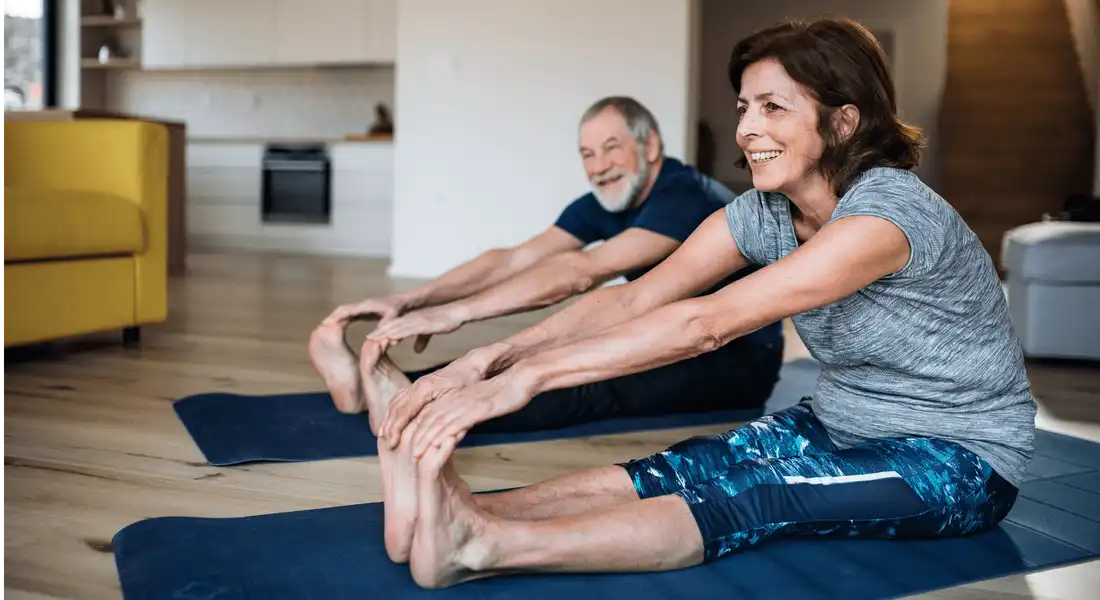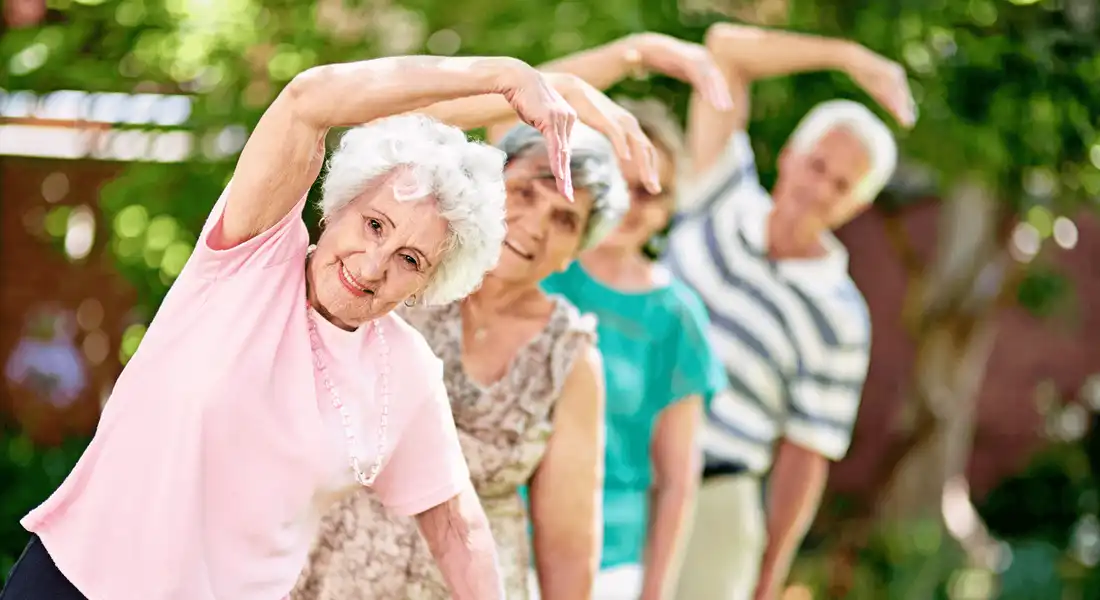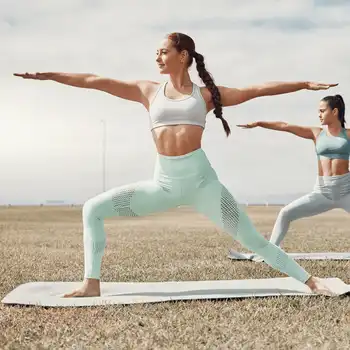Safe and Effective Exercises for the Elderly
By:
A Step Toward A better life
On
12/11/2023Summary:
As we age, our bodies undergo a natural transformation, marked by a decline in physical abilities and a heightened risk of chronic diseases. However, the golden years are not meant to be a period of decline and inactivity. Maintaining an active lifestyle is crucial for preserving mobility, preventing chronic diseases, and promoting a sense of vitality. Engaging in regular exercise is one of the most effective ways to achieve these goals and enhance quality of life for older adults.

A senior couple indoors at home, doing exercise on the floor
The Transformative Power of Exercise for Seniors
Regular physical activity offers a multitude of benefits for seniors, empowering them to embrace their later years with vitality and well-being. Here are some of the key advantages of incorporating exercise into your daily routine:
Improved Cardiovascular Health: Exercise strengthens the heart and improves circulation, reducing the risk of heart disease, stroke, and high blood pressure. These conditions are leading causes of mortality among older adults, and regular physical activity can significantly reduce the risk of developing them.
Enhanced Muscle Strength and Endurance: As we age, muscle mass tends to decrease, leading to weakness and fatigue. Regular exercise helps maintain muscle mass, which is essential for daily activities, balance, and fall prevention. Strong muscles provide the foundation for an active and independent lifestyle.
Strengthened Bones: Weight-bearing exercises, such as walking, dancing, or light weightlifting, help maintain bone density and reduce the risk of osteoporosis. Osteoporosis is a condition characterized by weak and brittle bones, making it more susceptible to fractures. Exercise can help prevent this condition and keep bones strong as we age.
Improved Balance and Coordination: Exercise plays a vital role in maintaining balance and coordination, reducing the risk of falls and injuries. Falls are a major concern for older adults, and regular exercise can significantly reduce the risk of falling and its associated consequences.
Reduced Pain and Stiffness: Exercise can alleviate pain and stiffness associated with arthritis and other joint conditions. Many seniors experience joint pain that can limit their mobility and quality of life. Regular physical activity can help manage pain and improve joint function.
Enhanced Cognitive Function: Physical activity can improve cognitive function, memory, and mood. Exercise has been shown to promote neurogenesis, the creation of new brain cells, which can enhance cognitive function and reduce the risk of dementia.
Choosing the Right Exercises for Seniors: A Personalized Approach
When selecting exercises for seniors, it is essential to consider individual factors such as age, fitness level, health conditions, and preferences. It is always advisable to consult with a healthcare professional before starting any new exercise program.
Here are some general guidelines for choosing safe and effective exercises for seniors:
Low-impact exercises: Low-impact exercises, such as walking, swimming, and water aerobics, are gentle on the joints and can be easily adapted to different fitness levels. These exercises are ideal for those who are new to exercise or have joint pain or conditions.
Strength training: Strength training exercises, such as using light weights or resistance bands, help maintain muscle mass and strength. Strength training can be done at home or in a gym setting, and there are many modifications available to suit different fitness levels.
Flexibility exercises: Flexibility exercises, such as yoga and tai chi, improve range of motion and reduce stiffness. These exercises can be done at home or in a group setting and can be tailored to individual needs.
Balance exercises: Balance exercises, such as standing on one leg or heel-to-toe raises, help improve balance and coordination. These exercises can be incorporated into a regular exercise routine or done as a separate activity.
Embarking on a Safe Exercise Journey
To safely start an exercise routine, seniors should follow these guidelines:
Begin gradually: Start with a short duration and gradually increase the intensity and duration of exercise over time. This allows your body to adapt to the new activity and reduces the risk of injury.
Listen to your body: Pay attention to your body's signals. Rest when needed and avoid overexertion. If you experience pain or discomfort, stop the activity and consult with a healthcare professional.
Warm up and cool down: Always warm up before exercise to prepare your muscles and prevent injuries. Cool down afterward to help your body gradually return to its resting state.
Wear proper footwear: Supportive shoes are essential for preventing injuries, especially in weight-bearing exercises. Choose shoes that provide good arch support and cushioning.
Hydrate adequately: Drink plenty of water before, during, and after exercise to stay hydrated and support your body's functions.

Additional Tips for Enhancing Exercise Success: A Holistic Approach
In addition to the core exercise guidelines, incorporating these tips can further enhance your exercise success:
Find an exercise buddy: Exercising with a friend or group can provide motivation, support, and a sense of camaraderie. This can make exercise more enjoyable and help you stay committed to your routine. Look for friends, family members, or neighbors who share similar interests and fitness levels. You can also join a local exercise class or group to connect with others who are passionate about physical activity.
Set realistic goals: Setting achievable goals can provide direction and motivation as you progress in your exercise journey. Break down your goals into smaller, manageable steps to avoid feeling overwhelmed. Celebrate your achievements along the way to maintain motivation and boost your confidence.
Make exercise enjoyable: Choose activities that you enjoy and find fun. If you don't enjoy your workouts, you're less likely to stick with them. Explore different types of exercise to find ones that you genuinely enjoy. This could include dancing, swimming, cycling, gardening, or any other activity that gets you moving and brings you joy.
Vary your routine: Incorporate different types of exercises into your routine to keep things interesting and challenge your body in different ways. This can prevent boredom and help you maintain a well-rounded fitness level. Alternate between low-impact activities, strength training, flexibility exercises, and balance exercises to target different aspects of your fitness.
Consult a healthcare professional: Before starting any new exercise program, it is crucial to consult with a healthcare professional. They can assess your overall health, identify any potential risks or limitations, and provide personalized recommendations for a safe and effective exercise plan.
Regular exercise is an essential component of a healthy lifestyle for seniors, offering a multitude of benefits for physical and mental well-being. By choosing safe and effective exercises, seniors can enhance their mobility, prevent chronic diseases, and maintain a sense of vitality. Remember, it's never too late to start exercising and reap the rewards of an active lifestyle. Embrace exercise and embark on a journey towards a healthier, more vibrant existence.



